Meet Our Member of the Week: Spencer Donovan
September 6, 2024
Spencer Donovan is an award-winning, transgender artist currently residing in the Chicago area. He has designed for companies around the Midwest, creating scenery, projections, and props for a variety of productions. He received his master's degree in design from Indiana University, Bloomington, where he studied scenic and projection design under Reuben Lucas, after receiving his undergraduate degree in theatre from Loyola University in Chicago. He prides himself on his identity as an LGBT designer and hopes to use art to create a more inclusive and open-minded world. As a scenic and projections designer, he works to make theatre more sustainable, cutting down on scenic waste by incorporating projections and rented or reused items into designs when he is able. He is constantly striving to give transgender individuals a voice, and working to make the industry a safer and more inclusive space.
Check out his interview and website below!
Tell us a bit about yourself! As live entertainment technicians, we always talk about our work. But who are you, outside of your work in live entertainment?
As a freelance designer, I rarely have time when I’m NOT working! But in those rare moments I get downtime, I love playing Dungeons and Dragons with my friends, hanging out with my dog, and spending time with my family. My fiancé and I are in the middle of planning our wedding (happening in January!), so lately he’s been showing me a lot of wedding registry items that he would like me to have an opinion on. There are so many colors of towels out there!
What sparked your interest in scenic design? How did you get where you are today?
I originally came to theatre as an actor in high school in a tiny Wisconsin town. My school’s program was very small, so we didn’t have a lot of technical elements. When I hit college at Loyola University in Chicago and saw what sets, lights and costumes could really do, I was blown away! I took a stagecraft class and enjoyed the time we spent with the scenic design professor, so I signed up for all his elective classes. He pulled me aside one day and said “Hey, you have a real knack for this. I’m going to get you a job in the scene shop. You need to learn more about how this all works.”
Eventually, I was able to design some shows for the program, and I really fell in love with it. Being a scenic designer forces me to be creative and problem-solve in ways I didn’t get to as an actor. My professors encouraged me to look at graduate design programs after graduation. The next ten years flew by, and here I am, a freelance designer working around the Midwest. I’m forever thankful to my professor, Tim Mann, for seeing something in me that I wouldn’t have seen myself. The educators in our lives really shape us, and he helped me unlock a dream I didn’t even know I had!
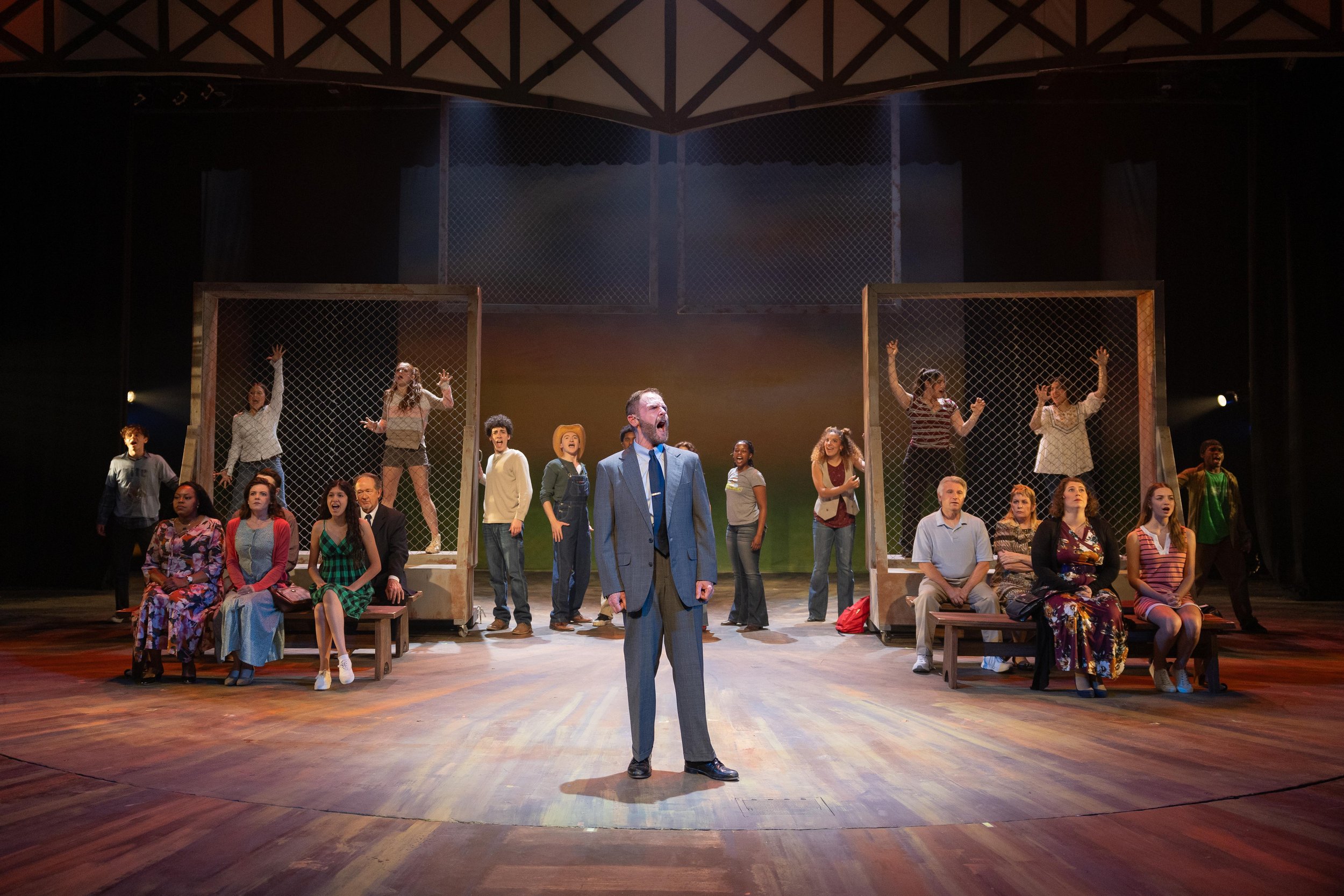
USITT emphasizes collaboration across different disciplines in theatre. How do you collaborate with other members of a production team, such as designers, actors, and directors, to achieve a cohesive production?
I really love it when I can dive deep into a script with directors. I always start by asking them why the story is important to them, and what they want to emphasize. How do we want our audiences to feel when they walk into the space? When they leave the theatre at the end of the show? What are our most important moments in the text? Then I ask myself “How can scenery help emphasize these ideas? What can I do to build on these moments?” A strong design isn’t just a pretty space. It helps tell the story, and when necessary, it becomes an active character on stage.
I’ve also learned that it is far more important to be a team player than it is to get your artistic vision on stage. Theatre is a team sport. Everyone is working together to put on the best show possible. Your ideas might be great, but they don’t matter at all if a director can’t use them, if they get in the way of your lighting designer, or if they make certain costume pieces impossible. It’s always a give and take, and I try to give a lot more often than I take. Scenic designers have the benefit of usually “going first” when it comes to finalizing our ideas, but I’d always rather bring on the full team to discuss things whenever possible. Shows are the best when all your design areas are firing on all cylinders, and to get that to happen you need to communicate a lot during the design process.
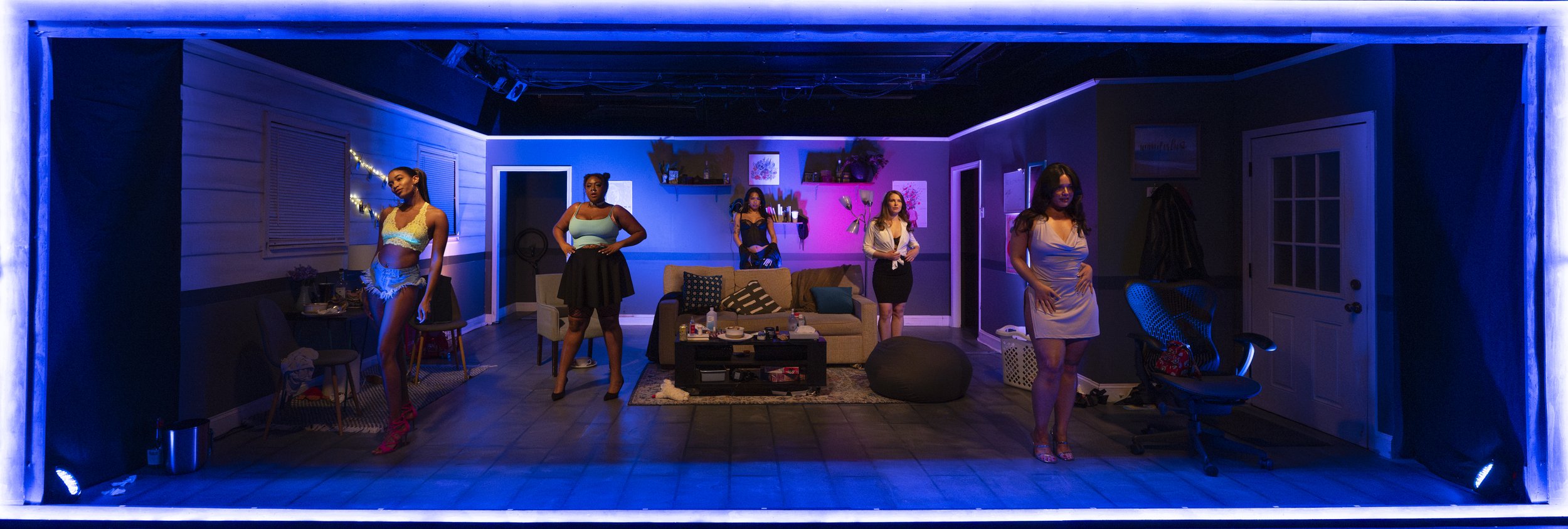
Do you have a favorite project you’d like to tell us about? Or an onstage “wow” moment that you helped conceptualize?
I usually find ways to get excited about any project I’m working on, and I try to give my teams at least one “wow” moment in every show. One that comes to mind is a production of Carrie. I was designing both scenic and projections on that. We’d built this false proscenium that was meant to look like stained glass windows. The windows changed colors and designs throughout the story, mirroring Carrie and where she was emotionally in each number. In the final prom scene, when the bucket of blood was dumped on top of her, the windows shattered and were replaced by this broken husk of glass. It was so over-the-top and just fun. It added some excitement to the final visual that I really loved.
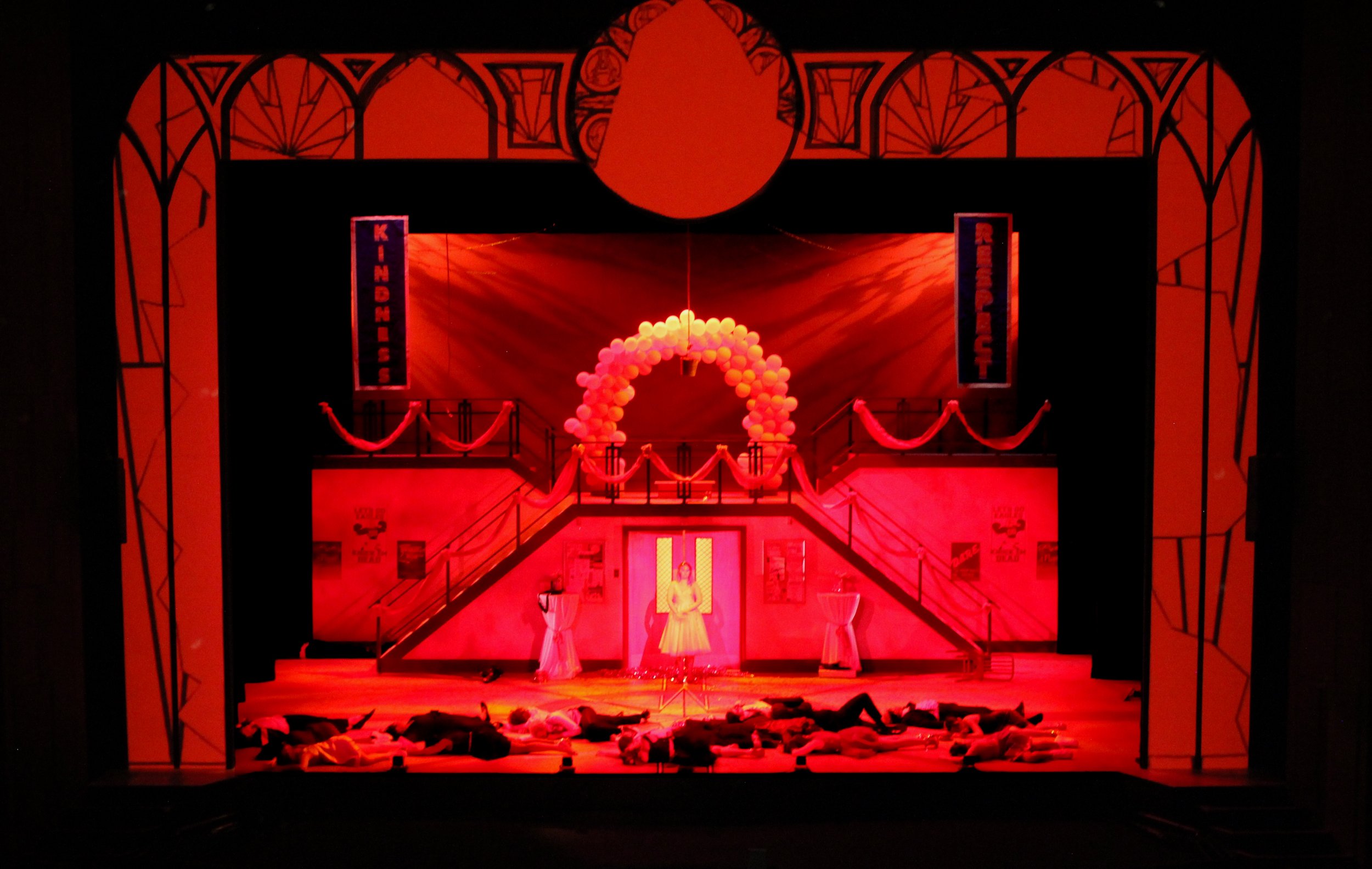
You talk about being a trans designer who wants to “use art to create a more inclusive and open-minded world”. How do you do this in your work?
A lot of this is rooted in the shows I decide to take on. One of the great perks of being a freelance designer is being able to build my own schedule each year. When a script comes across my inbox that dives into LGBT issues or tells stories about individuals who don’t usually get the spotlight, I tend to take it even if the size of the contract isn’t ideal. Those are my “passion projects”; shows that take risks and might actually open the hearts and minds of the audiences seeing them. And if there are trans characters in a script, I’d love to be in the room. If you’re going to tell queer stories, you better have some of those voices in the room representing us. I try to be a mouthpiece for my communities in every room I work in.
I also really celebrate the companies who value my identity and do what I can to lift them up to other artists. Conversely, if I experience transphobia or homophobia while I’m working somewhere, I’m going to be very loud about it. This industry is largely based on networking and who you know, so speaking out against wrongdoers can be scary. You don’t want to shoot yourself in the foot. But I also think that, in order to grow and better ourselves as an industry, certain things deserve a callout every now and then. I’m not going to take to social media by any means, but I will reach out to my circle of designers and colleagues and tell them where to work….and where not to work.
The rendering process can look so different for designers. What does the rendering process look like for you?
This greatly depends on the show I’m working on, but I’m definitely more of a digital designer. I usually start by building a digital 3D model of the space and experimenting with how much room I have. This usually consists of me making a 3D “sketch” with blocks and shapes to see how I can break up the space. I’ll then export that to my trusty iPad and start hand sketching on top of it, giving things more detail. This usually puts me in the prelims world.
For full renderings, I’ll go back and really flesh out that 3D model, add some lighting instruments into the rendering, and then finish out the process by doing some drawing by hand over the top of that rendered image. Sketchup and Capture are my go-to software, but I wouldn’t survive without Procreate. I used to do things with good ol’ pencil and paper, but going digital really helped streamline the process, since I tend to be communicating with team members via email and Zoom nowadays. Every now and again I’ll whip out a sketchbook while I’m chatting with a director. I also found that, for whatever reason, my best ideas come to me in the shower! So I’m armed with shower crayons if an idea needs to get drawn immediately. It’s silly, but it works!
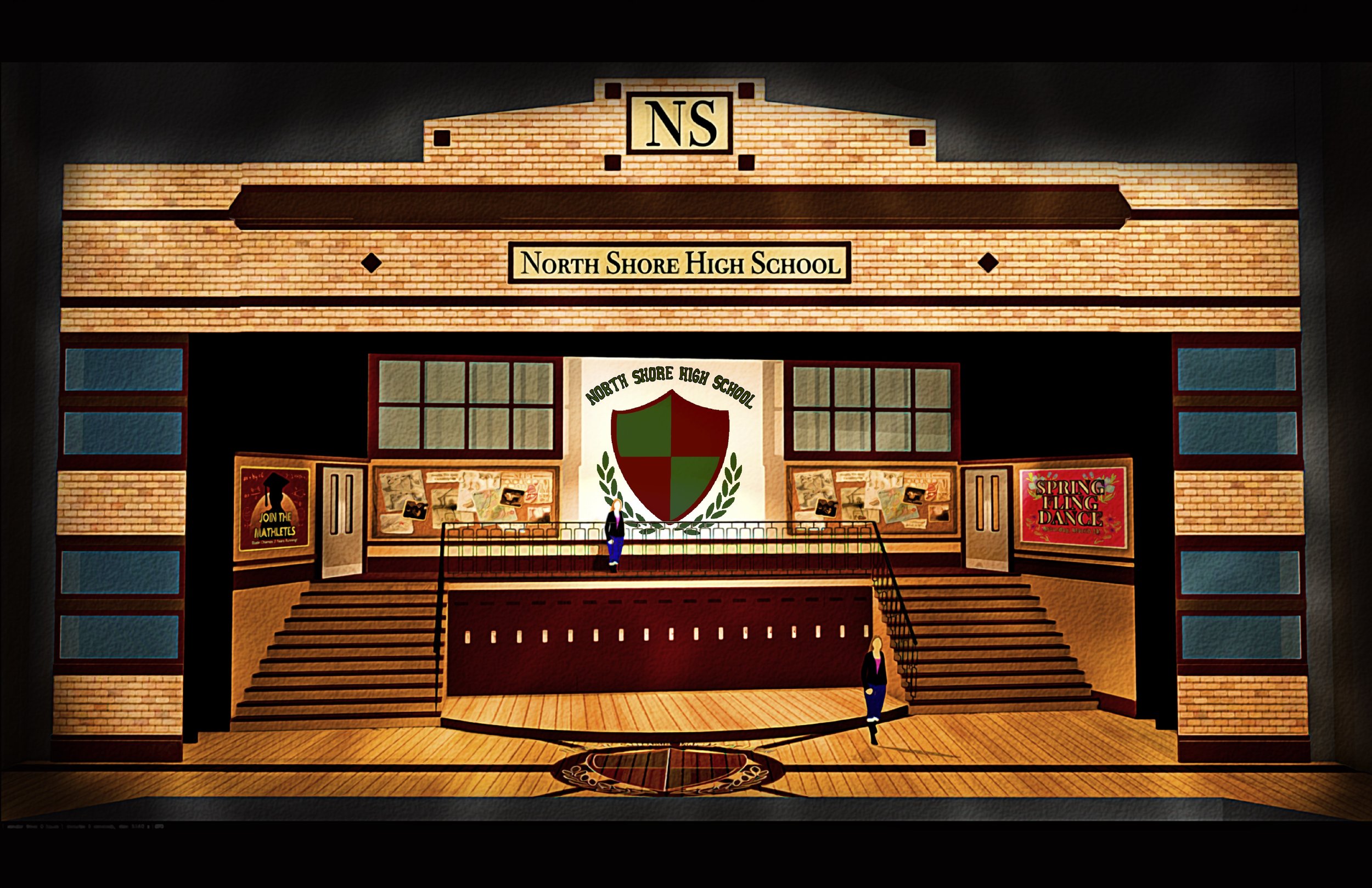
What do you consider the most rewarding aspect of being a scenic designer? Conversely, what are some of the biggest challenges you face in this role?
I love world-building. More often than not, my set is fully visible to an audience when they step into the theatre and take a seat. It’s their first brush with the story they’re about to hear. I love when the team has worked together to create an exciting introduction to the world before the show even starts. And of course, I’m always a big fan of moments when all the design areas have worked together to create something exciting. When all our team members sit down together and bounce ideas off of each other; that’s the most exciting part of design for me.
I think the biggest challenge I face is that, due to the nature of working in theatre, folks have to take on so many contracts at once just to make ends meet. You can tell when some folks have their attention divided between what they’re working on with you and other projects. Even I’ve fallen victim to it, when I’m working on several contracts at once so I can pay my bills at the end of the month. It’s rough when everyone isn’t present in the room with you for those production meetings, and it can make those big moments impossible.

If you could change one thing about working in the live entertainment industry, what would it be and why?
I probably wouldn’t be alone in saying the hours that this job requires can be pretty taxing. And there seems to be a general expectation that, before you hit the big leagues, you have to do so many years of grinding. Obviously, no one can start out on top of the world, but I’ve worked with too many companies who expect hours and hours of unpaid work that weren’t outlined in my original contract. Obviously, I always end up doing that work, because I want all of my shows to get up in time and be the best they can be. But I’d like companies to invest in people rather than products. Sure, the set has to be smaller if we hire another scenic painter with some of the budget, but the final product is going to look that much stronger for it. Getting strong artists and technicians in the room is always worth the money, in my opinion.
USITT offers numerous resources and opportunities for professional development. Can you share how being a member has benefited your career and artistic growth?
USITT has given me so many opportunities for networking and growth. I’ve met so many people through the Annual Conference, and I love taking that opportunity every year to connect with my friends who work around the country. Since I’m the only scenic designer on any production team, I rarely get to chat with other scenic designers. It’s so wonderful to be able to touch base with other artists in my field at Conference.
I was also very eager to participate in the annual design competition every year I was in school (and I was lucky enough to win!). Getting feedback on my work from professional designers was invaluable to me as I was getting my degree. It always meant a lot to me that working professionals took the time to write out paragraphs of feedback, and the experience always taught me a lot year after year.
And as a trans artist, I’m so thankful that USITT has programs like Gateway and The Vault. I go to the LGBT meetup at the Conference every year, and it’s always so exciting to be in a room full of other LGBT artists and technicians. Taking steps to focus on IDEA issues paves the way for other live entertainment companies to do the same. It’s wonderful to me that USITT doesn’t just say those issues matter to them, but they actually create programs that support diversity in the arts field. It’s nice to know LGBT artists will always have a place at USITT.
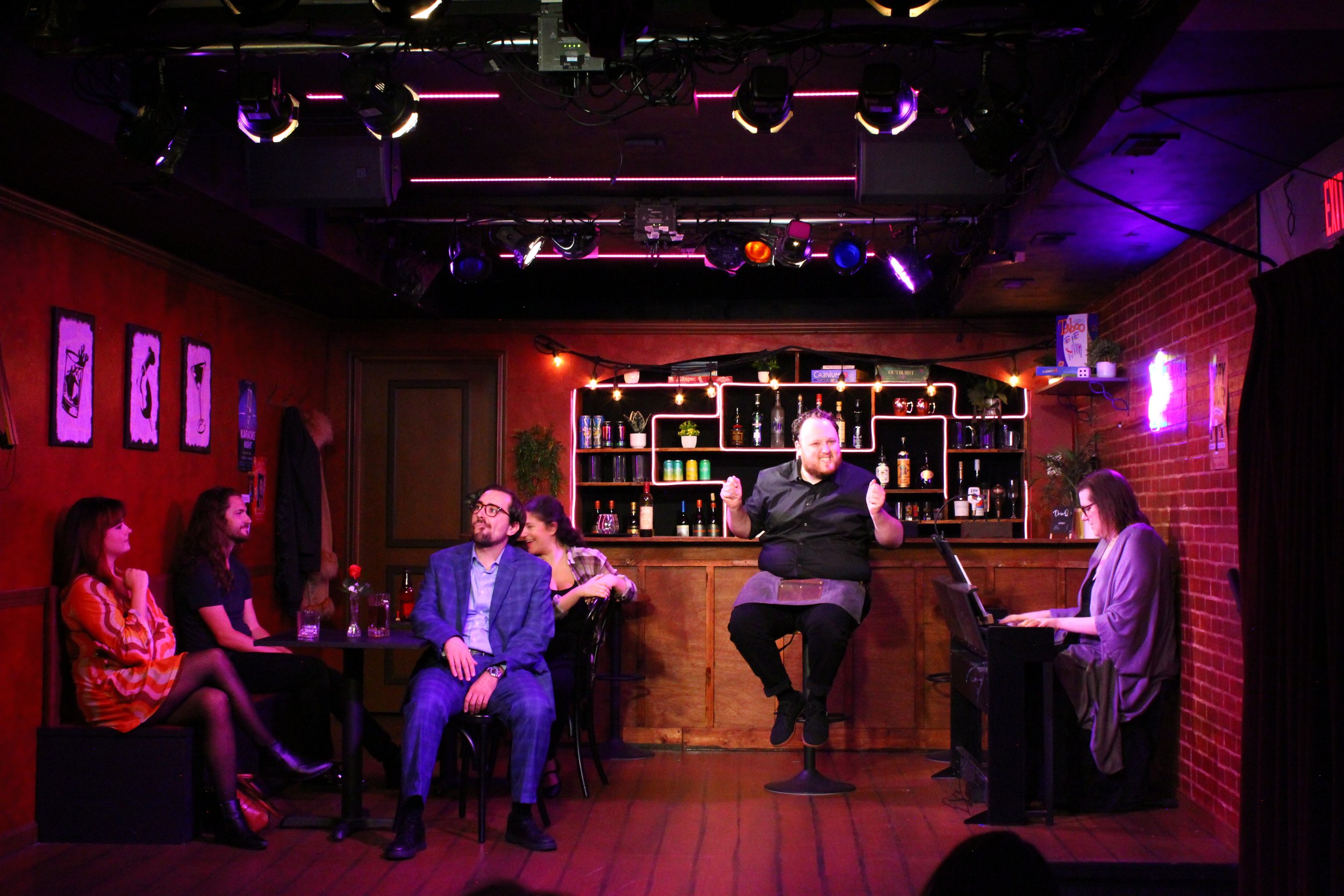
Are you working on any projects that you’re excited about right now?
I just opened a production of First Date here in Chicago at Oil Lamp Theatre. They have an intimate space that I’ve worked in a few times now, and it’s always really exciting to me how much we manage to transform it. I just started working on a production of Cinderella at The Marriott in Chicago. But I’m also being kind to myself and letting myself take a few weeks off in the next few months, so I can finish planning my wedding! It's probably the most exciting project I’ve ever worked on.